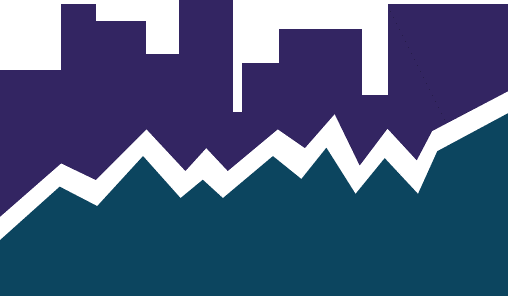The Monday Morning Quarterback
A quick analysis of important economic data released over the last week
U.S. Consumer Price Index Headaches
U.S. inflation surged to a new four-decade high of 8.5% in March from the same month a year ago, driven by skyrocketing energy and food costs, supply constraints and strong consumer demand. Rising prices have been unrelenting, with six straight months of inflation above 6% that is well above the Federal Reserve’s average 2% target. On top of that, the Phoenix Metro inflation rate has been running higher than the national average since last October (Phoenix gets inflation reports every two months). In December, the Phoenix inflation rate was 9.7% compared to the U.S rate was 7.0%. For February, the Phoenix rate jumped to 10.9%, well above the U.S average of 7.9%. Housing prices are responsible for much of the difference as Phoenix continues to lead the nation in that category.
High inflation is the downside of booming growth as the economy bounces back from COVID-19, powered in part by low interest rates and government stimulus to counter the pandemic’s impact. The Fed’s top goal is to reduce inflation and the central bank faces a tough balancing act of tightening monetary policy without damping growth.
Russia’s invasion of Ukraine drove a March surge in oil and gasoline prices, which hit records in mid-March, and overall energy prices shot up 11% from the prior month. Prices for groceries accelerated in March, rising 1.5% from a month earlier, while the cost increases for dining out moderated.
The so-called core price index, which excludes the often-volatile categories of food and energy, increased 6.5% in March from a year earlier—up from February’s 6.4% rise, and the sharpest 12-month rise since August 1982.
Economists and investors are looking for evidence the inflation surge that started in early 2021 is close to a peak. One possible early sign came from the monthly change in the core index. It rose 0.3% in March from the prior month, the slowest pace in six months, driven by a 3.8% decline in used vehicle prices.
Another encouraging sign was that airline fares, hotel prices and other more volatile categories drove much of the price gains for services, while pressure eased from categories such as housing, which tend to be more persistent. Supply-chain constraints continue to push prices up, except for an easing of the costs for used cars. A normalization of supply chains will be impacted Russia’s invasion of Ukraine and the rise of COVID in China. China has in recent weeks locked down parts of the country, including Shanghai a major hub of manufacturing.
U.S. airline fares leapt 10.7% in March from February, accelerating as travel demand recovered from the last COVID-19 wave. Air-travel prices were 23.6% higher than they were a year earlier.
Auto prices, which have powered much of the inflationary surge, eased in March. New vehicle prices decelerated on a one-month basis, rising 0.2% in March from the prior month. However, the 12.5% 12-month increase was the sharpest since 1975. Despite the monthly decline in used-vehicle prices, those were still up 35.3% from a year earlier.
U.S. Snapshot:
- Inflation’s rise continued, according to the latest Consumer Price Index release. The latest data shows the All-Items index increasing 8.5% from a year ago and Core-Inflation increasing 6.5%. Both indices increased at levels not seen in 40 years. Last month’s increase includes the price spike seen in the energy sector and food costs, combined with continued supply constraints and strong consumer demand. Looking at the data, there is evidence that inflation has peaked or is close to peaking. Core-inflation’s monthly increase was 0.3% – the lowest in the last six months. Additionally, core-inflation crossed above the Fed’s target of 2% in April 2021 and has remained there for the past 12 months.
- Retail sales rose 0.5% in March, down from the monthly increase of 0.8% seen in February. Compared to a year ago, retail sales were up 6.9%. The biggest increase (8/9%) was in gas stations.
- Mortgage rates reached 5% for the first time in a decade. Housing price growth has not slowed, and tight inventory will make homeownership harder and more expensive.
- Consumer sentiment jumped 10.6% unexpectedly. The majority of the improvement was due to a decline in gas prices. April’s consumer sentiment was still below January’s level.
Arizona Snapshot:
- Taxable retail sales remained above the levels of a year ago across Arizona and Maricopa County. Total sales were up 12.8% in Arizona and 14.3% in Maricopa County.
- Tucson area housing inventory was down 6.4% in March, according to the Tucson Association of Realtors. The number of sales declined 8.2% when compared to a year ago. The median sales price was up 18.0% to $371,570.












